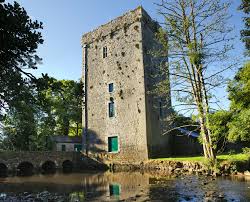Joseph M Hassett writes: Part of poetry’s magic is that words written in one era can speak directly to new readers in a subsequent age.
WB Yeats’s “The Stare’s Nest By My Window” is just such a poem. Written nearly a century ago, it speaks directly to the fear and anxiety we suffer while locked in ‑ physically and psychologically ‑ by Covid-19.Yeats experienced similar emotions in the summer of 1922 while isolated in his tower in rural Galway, surrounded by the violence and uncertainty of the Civil War.
His poem sets the scene in all too recognisable terms:
We are closed in, and the key is turned
On our uncertainty.
Yeats found the perfect metaphor to express the balm for which his circumstances cried out when he spotted an empty bird’s nest by his window: “O honey-bees,” he wrote, “Come build in the empty house of the stare.”
He elaborated on the origin of these lines in a note to the published version of the address he delivered upon receiving the Nobel Prize for Literature a year later. The honey-bees seem almost to have been willed into existence as an antidote to bitterness, unhappiness and uncertainty. He responded to these circumstances with “an overmastering desire not to grow unhappy or embittered, not to lose all sense of the beauty of nature”.


He told how a “stare (our West of Ireland name for a starling) had built in a hole beside my window”. Presently, “a strange thing happened. I began to smell honey in places where honey could not be, at the end of a stone passage or at some windy turn of the road …” He wrote his plea to the honey-bees, he said, “out of the feeling of the moment”.
Yeats enwrapped his concluding invocation of the honey-bees in lines whose cadence and rhyme fix the plea in memory:
We had fed the heart on fantasies,
The heart’s grown brutal from the fare;
More substance in our enmities
Than in our love; O honey-bees,
Come build in the empty house of the stare.
Seventy-two years after Yeats’s 1923 Nobel Lecture, Seamus Heaney used his own Nobel address to breathe new life into his predecessor’s metaphor. Heaney’s extensive discussion of “The Stare’s Nest by my Window” included a compelling observation on Yeats’s ability to distil the emotions surrounding an experience and preserve them in memorable language. “Yeats’s work’, he said, “does what the necessary poetry always does, which is to touch the base of our sympathetic nature while taking in at the same time the unsympathetic reality of the world to which that nature is constantly exposed.” Commenting on how the form of Yeats’s poem solidifies its meaning, Heaney instanced the way in which the trio of forces – “build”, “house” and “empty” – is “held in equilibrium by the triple rhyme of ‘fantasies’ and ‘enmities’ and ‘honey-bees”’.
The message so memorably encoded in Yeats’s poem has vital meaning today. Replacing bitter political fantasies with bee-like co-operation is the path to sweetness and light.
Eavan Boland’s 1967 poem “Yeats in Civil War” beautifully captures the earlier poet’s achievement. Preceded by an epigraph quoting his account of smelling honey in places where honey could not be, Boland’s poem addresses Yeats directly, first situating him closed in by his tower, then describing his miraculous escape via the creative imagination:
Somehow you arranged your escape
Aboard a spirit-ship which every day
Hoisted sail out of fire and rape,
And on that ship your mind was stowaway.
Her poem concludes:
… Whatever we may learn
You are its sum, struggling to survive ‑
A fantasy of honey your reprieve.
21/5/2020
Joseph Hassett’s new book, Yeats Now: Echoing into Life, will be published by Lilliput later this year. Image of Thoor Ballylee from yeatsthoorballylee.org



